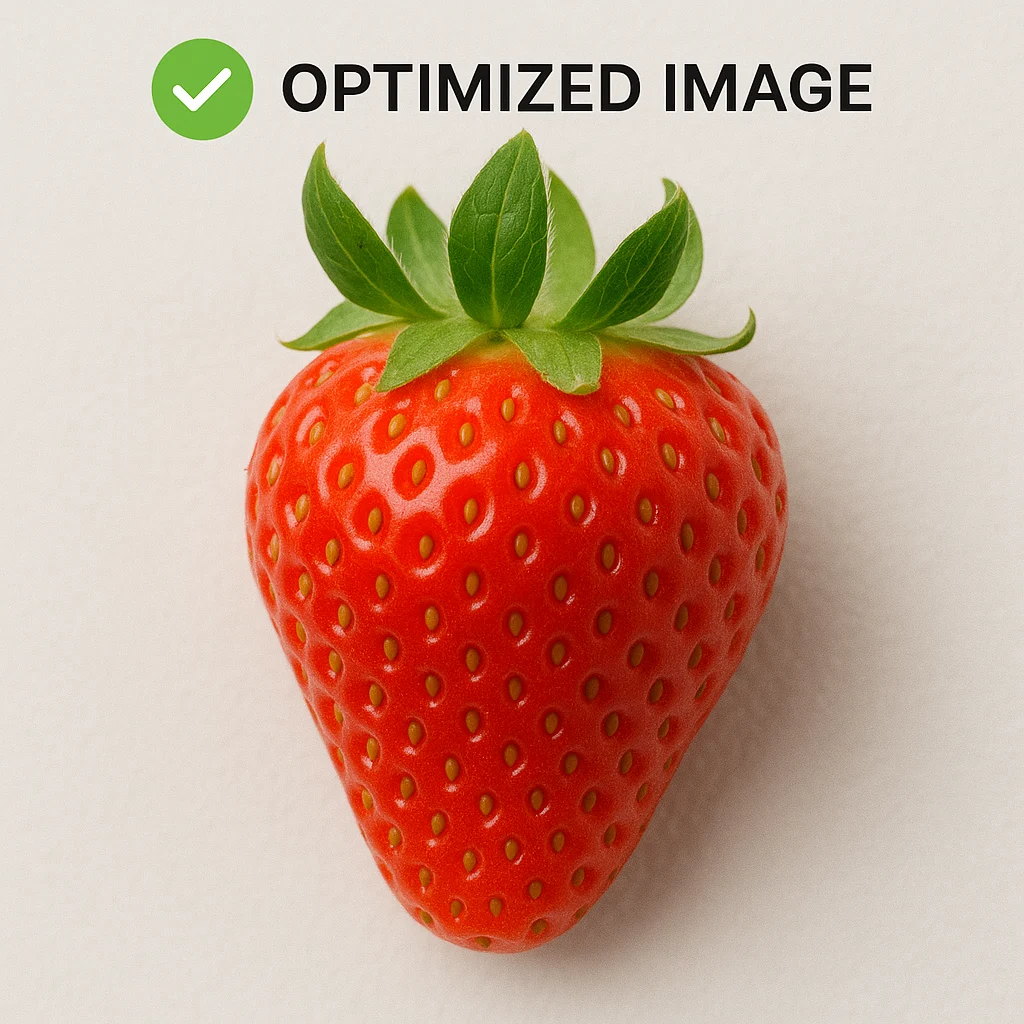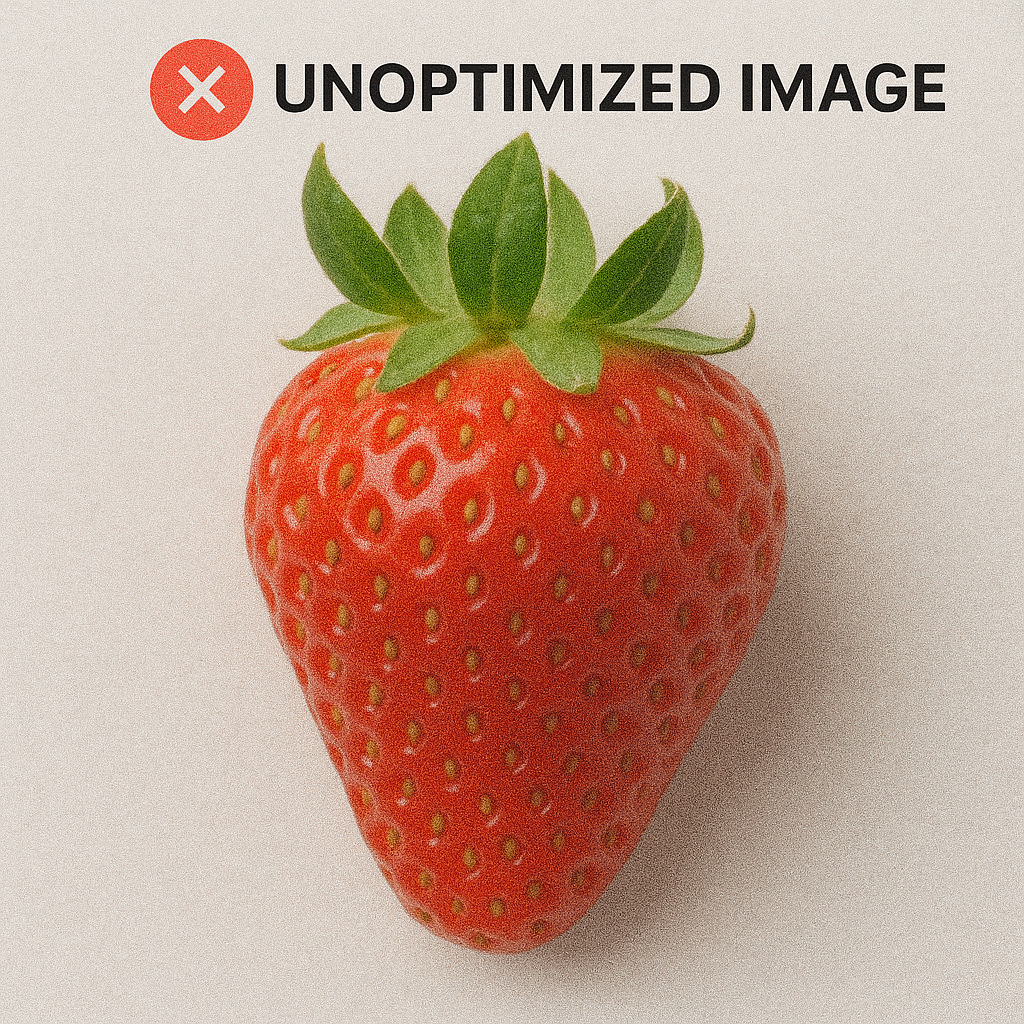How Image Compression Impacts Google's Core Web Vitals

If you're invested in your website's performance and search engine ranking, you've likely heard about Google's Core Web Vitals (CWV). These metrics measure real-world user experience, focusing on loading speed, interactivity, and visual stability – and they directly influence SEO.
While many factors contribute to your CWV scores, one of the most significant and often easiest to address is image optimization. Unoptimized images are frequently the primary culprits behind poor CWV scores. Let's explore exactly how image compression impacts each of these vital metrics.
Quick Refresher: What are the Core Web Vitals?
Google currently defines the Core Web Vitals as:
- Largest Contentful Paint (LCP): Measures loading performance. It marks the point when the largest image or text block visible within the viewport becomes rendered. A good LCP score means users see the main content quickly.
- First Input Delay (FID) / Interaction to Next Paint (INP): Measures interactivity. FID measures the time from when a user first interacts (e.g., clicks a button) to when the browser responds. INP is evolving to provide a more comprehensive measure of overall responsiveness throughout the page lifecycle. A good score means the page feels responsive to user actions.
- Cumulative Layout Shift (CLS): Measures visual stability. It quantifies how much unexpected layout shifts occur as the page loads (e.g., text jumping down as an image pops in). A good score means the page layout is stable and predictable.
Google uses these metrics to evaluate page experience, a factor in search rankings.
The Strongest Link: How Images Destroy (or Improve) LCP
Largest Contentful Paint (LCP) is the Core Web Vital most directly and significantly impacted by images. The LCP element is often a large hero image, banner, or product photo.
Here's why unoptimized images hurt LCP:
- Slow Download Times: Large image files (in terms of kilobytes/megabytes) take longer to download, especially on slower networks. The browser can't paint the image until it's downloaded.
- Longer Rendering Times: Even after downloading, the browser needs time and resources to decode and render a large, complex image.
How Image Compression Helps LCP:
- Drastically Reduced File Sizes: Effective compression (using lossy techniques like JPEG/WebP via tools like IMGCompress) shrinks the file size, leading to much faster downloads.
- Faster Rendering: Smaller, optimized files are generally quicker for the browser to process and display.
- Modern Formats (WebP): WebP often delivers the same visual quality at a significantly smaller file size than JPG or PNG, directly improving download speed.
Key takeaway: Proper image compression is arguably the single most impactful optimization you can make for improving your LCP score.
Beyond LCP: Indirect Impacts on CLS and FID/INP
While LCP sees the most direct benefit, image optimization also influences the other Core Web Vitals:
Cumulative Layout Shift (CLS)
CLS happens when elements shift around unexpectedly after they first appear. Images are a common cause if space isn't reserved for them before they load:
- The Problem: If an image tag
widthandheightattributes (or appropriate CSS aspect-ratio styling), the browser doesn't know how much space to allocate. When the image finally downloads and renders, it pushes other content down, causing a layout shift. - The Fix: Always include
widthandheightattributes on your image tags matching the image's intrinsic aspect ratio. This allows the browser to reserve the correct space immediately, even before the image file has downloaded, preventing shifts. Proper compression ensures the image *fills* that reserved space faster, but the reservation itself prevents the CLS.


First Input Delay (FID) / Interaction to Next Paint (INP)
FID/INP measure how quickly the browser responds to user interaction. While less directly tied to static images than LCP or CLS, there can be indirect effects:
- Main Thread Blocking: Extremely complex images or excessive numbers of images *could* contribute to blocking the browser's main thread during decoding and rendering, potentially delaying its ability to respond to user input. However, this is usually less impactful than heavy JavaScript execution.
- Optimization Benefit: Properly compressed and sized images require less processing power from the browser, freeing up the main thread sooner for handling user interactions and running scripts.
Optimizing JavaScript is typically more critical for FID/INP, but ensuring images are efficient contributes to overall browser performance.
Image Optimization Strategies for Better Core Web Vitals
To leverage image optimization for improved CWV scores, focus on these key actions:
- Compress Effectively: Use lossy compression (JPEG/WebP) for photos, finding the right quality balance to significantly reduce file size (improves LCP).
- Use Modern Formats: Serve images in WebP format whenever possible for superior compression (improves LCP).
- Implement Responsive Images: Use
srcsetandsizesto deliver appropriately sized images for different devices (improves LCP on mobile). - Specify Image Dimensions: Always include
widthandheightattributes on - Lazy Load Offscreen Images: Use
loading="lazy"for images below the fold to speed up initial load and improve LCP. - Consider a CDN: Content Delivery Networks (CDNs) can deliver images faster by serving them from locations closer to the user (improves LCP).
Measure Your Success
After optimizing your images, use tools like Google PageSpeed Insights, Lighthouse in Chrome DevTools, or the Core Web Vitals report in Google Search Console to measure the improvement in your LCP, FID/INP, and CLS scores.
Conclusion: Optimized Images are Foundational for CWV
Core Web Vitals are here to stay as a key indicator of user experience and a factor in SEO. While various technical aspects contribute to these scores, image optimization offers some of the most significant and achievable improvements.
By focusing on effective compression, modern formats, responsive delivery, and preventing layout shifts, you directly address the core requirements for better LCP and CLS scores, contributing to a faster, smoother, and higher-ranking website.